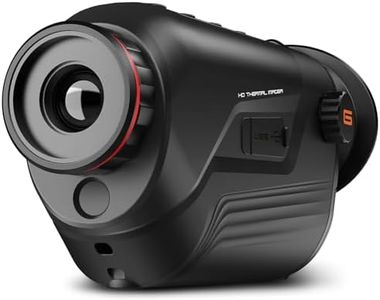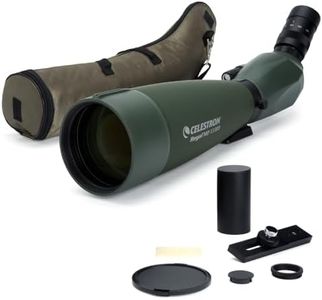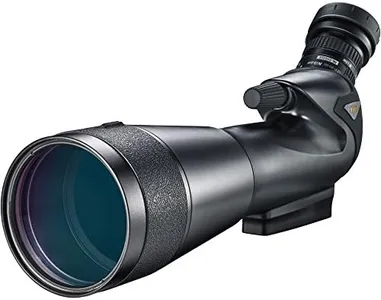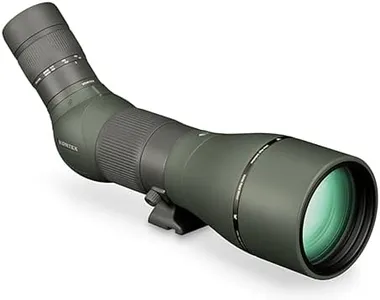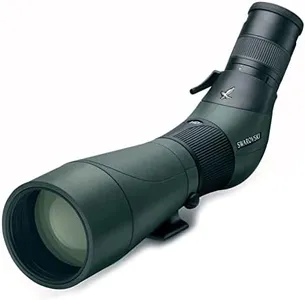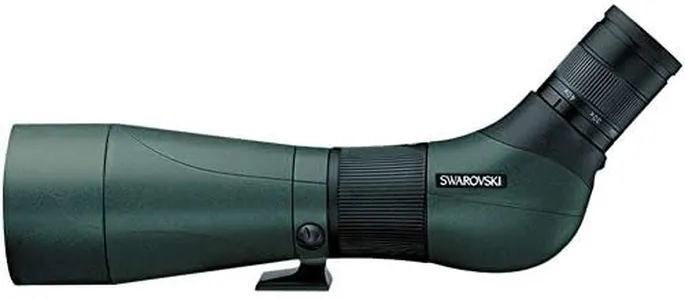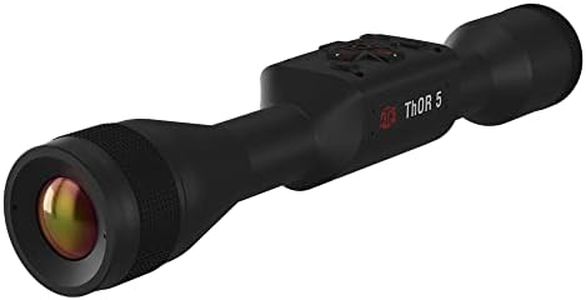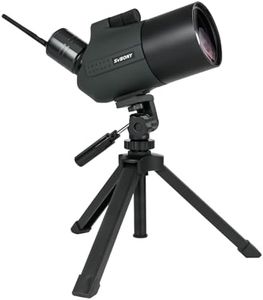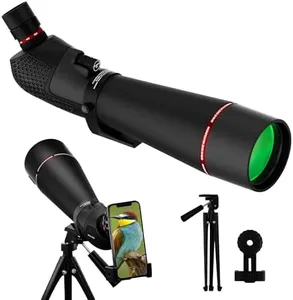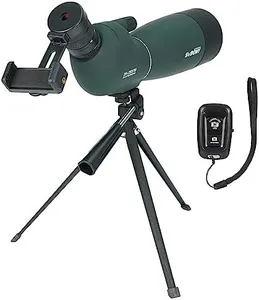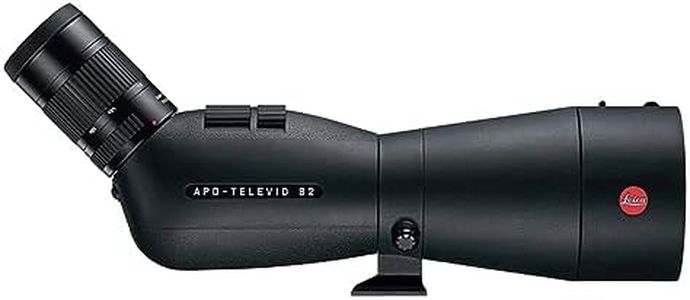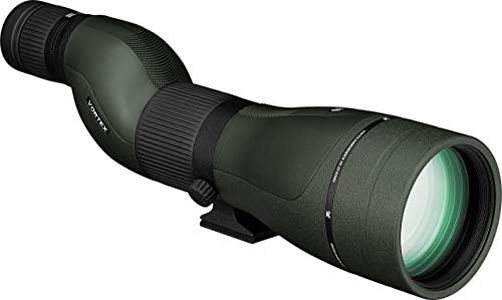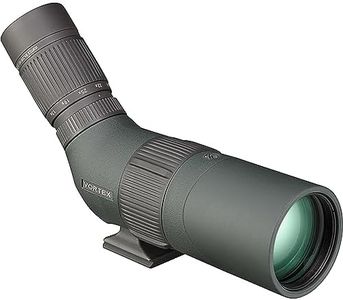10 Best Spotting Scopes 2025 in the United States
Our technology thoroughly searches through the online shopping world, reviewing hundreds of sites. We then process and analyze this information, updating in real-time to bring you the latest top-rated products. This way, you always get the best and most current options available.

Our Top Picks
Winner
Celestron – Regal M2 100ED Spotting Scope – ED Glass for Birding and Outdoor Activities – Phase and Dielectric Coated BaK-4 Prism – Fully Multi-Coated Optics – Dual Focus – 22-67x Zoom Eyepiece
Most important from
367 reviews
The Celestron Regal M2 100ED is a strong choice for bird watchers and outdoor enthusiasts who want clear, vibrant views. Its 100mm objective lens combined with extra-low dispersion (ED) glass helps reduce color fringing, giving you sharp, true-to-life images. The zoom eyepiece offers flexible magnification from 22x to 67x, letting you zoom in closely or keep a wider view, though the field of view at 0.9 degrees is fairly narrow when zoomed in. Celestron’s XLT multi-coatings enhance light transmission for brighter images, especially useful in various lighting conditions. The magnesium alloy body makes it robust, but at 5 pounds, it might feel a bit heavy if you plan to carry it for long hikes.
The scope is well-sealed and fogproof, making it suitable for most outdoor conditions. The rotating tripod mount and included accessories—like a padded case and camera adapter—add convenience and versatility, especially if you want to try digiscoping. This scope offers excellent optical quality and flexible use for serious spotting but may be less ideal if you prioritize ultralight gear.
Most important from
367 reviews
Nikon Prostaff 5 Proscope 82mm Angled Body with 20-60x Zoom, Black
Most important from
54 reviews
The Nikon Prostaff 5 Proscope 82mm is a solid choice for anyone looking for a reliable spotting scope, particularly enthusiasts of bird watching or nature observation. With an impressive 82mm objective lens, it strikes a great balance between size and brightness, allowing for clear images even in low-light conditions. The multicoated optics enhance brightness and contrast, ensuring that colors are rendered accurately, which is crucial for detailed observations. The adjustable zoom ranging from 20x to an impressive 60x provides versatility, accommodating various viewing distances and situations.
One of the notable strengths of this scope is its ergonomic and lightweight design, weighing just 4.1 pounds, making it manageable for extended use or transport. The Porro prism construction contributes to its compact form, while internal surface texturing minimizes reflective light loss, which can be beneficial during bright days.
The Prostaff 5 is also built to withstand challenging outdoor conditions, being both waterproof and fogproof thanks to its nitrogen-purged and O-ring sealed construction. This feature adds to its longevity and reliability in different weather scenarios, a definite plus for outdoor enthusiasts. Additionally, the built-in sliding sunshade helps prevent glare and protects the lens from dust and rain, enhancing the user experience. However, there are a couple of considerations to keep in mind. The weight, while portable, may still be a bit heavy for some users who prefer ultra-light models for hiking or extended treks. Also, while the magnification up to 60x is excellent for far distances, it may be challenging to stabilize at maximum zoom without a sturdy tripod, which might be an extra expense.
Most important from
54 reviews
Vortex Optics Razor HD Spotting Scope 27-60x85 Angled
Most important from
411 reviews
The Vortex Optics Razor HD Spotting Scope 27-60x85 Angled is designed for serious outdoor enthusiasts, especially those interested in birdwatching, hunting, or wildlife observation. Its impressive magnification range of 27-60x and large objective lens size of 85 mm allows for clear, bright images even in low-light conditions. The use of high-density, extra-low dispersion glass ensures excellent color fidelity and resolution, making it a top choice among spotting scopes.
One of its standout features is the XR Plus anti-reflective lens coatings, which maximize brightness and clarity. The helical focus is smooth and helps achieve sharp images, while the adjustable eyecup offers comfort, especially during long viewing sessions. The durable construction, including O-ring sealing and argon purging, makes it both waterproof and fogproof, appealing to those who might use it in various weather conditions.
The Razor HD is relatively heavy at 65.6 ounces, which may be a drawback for users prioritizing portability. While it does come with a custom-fitted neoprene case, carrying it for extended periods could be cumbersome. Additionally, it is marketed towards expert users, which may intimidate beginners who might find the setup and usage slightly complex.
Most important from
411 reviews
Buying Guide for the Best Spotting Scopes
When choosing a spotting scope, it's important to consider your specific needs and how you plan to use the scope. Spotting scopes are used for a variety of activities such as bird watching, hunting, target shooting, and nature observation. The right spotting scope for you will depend on factors like magnification, objective lens size, field of view, and other features. Understanding these key specifications will help you make an informed decision and ensure you get the best scope for your needs.FAQ
Most Popular Categories Right Now
